I. Introduction
This paper is an explanation of the time and speed relationship and how could it affect our perception. This paper will explain the change of human perception of objects, motion and action as they are affected by controlling the time and speed. This paper will start by discussing the current theories of time and how we perceive thing s in the real time passing through more complex situation and explain the Einstein theory of relativity which we can relate to as reference in this paper. Then I will relate this topic to how time perception can generate architectural forms.
This paper is an explanation of the time and speed relationship and how could it affect our perception. This paper will explain the change of human perception of objects, motion and action as they are affected by controlling the time and speed. This paper will start by discussing the current theories of time and how we perceive thing s in the real time passing through more complex situation and explain the Einstein theory of relativity which we can relate to as reference in this paper. Then I will relate this topic to how time perception can generate architectural forms.
II. The Start
In the late 1950s, a modern technology invented in Canada in could improve how health workers assess people suffering from brain injuries and brain diseases. This technology has developed over the years to be what we today call a Virtual Reality. This technology able to generate digital simulation images of the brain with the current symptoms on computers as 2D or 3D so they can reach to specific diagnoses. I will explain it in the matter of the 4th dimension as we going on. Although time is impossible to control in term of delaying, freezing or, it is absolutely possible in the virtual reality.
In the late 1950s, a modern technology invented in Canada in could improve how health workers assess people suffering from brain injuries and brain diseases. This technology has developed over the years to be what we today call a Virtual Reality. This technology able to generate digital simulation images of the brain with the current symptoms on computers as 2D or 3D so they can reach to specific diagnoses. I will explain it in the matter of the 4th dimension as we going on. Although time is impossible to control in term of delaying, freezing or, it is absolutely possible in the virtual reality.
III. Time and speed
As the basic physics says, every action takes place with certain speed during an amount of time. Thus says that there is a strong relationship between time and speed. So we can define the time to be “a non-spatial continuum in which events occurs in apparently irreversible" succession from the past through the present to the future”. And the speed as the limit of this quotient as the time of travel becomes vanishingly small. So when you write the word APPLE you will write it in seconds with some speed. But if you write QUALIFICATION it will take more time to write with same speed. However if you increase the speed of writing on the second word you will finish shorter time until your reach the same time of the first word. So we manage time in reality by controlling the speed of our actions. In fact you cannot elongate and make the day move faster so you finish your job quickly and also you cannot slow the vacation times to have more leisure time. And this is a simple proof of disability to control the time.
As the basic physics says, every action takes place with certain speed during an amount of time. Thus says that there is a strong relationship between time and speed. So we can define the time to be “a non-spatial continuum in which events occurs in apparently irreversible" succession from the past through the present to the future”. And the speed as the limit of this quotient as the time of travel becomes vanishingly small. So when you write the word APPLE you will write it in seconds with some speed. But if you write QUALIFICATION it will take more time to write with same speed. However if you increase the speed of writing on the second word you will finish shorter time until your reach the same time of the first word. So we manage time in reality by controlling the speed of our actions. In fact you cannot elongate and make the day move faster so you finish your job quickly and also you cannot slow the vacation times to have more leisure time. And this is a simple proof of disability to control the time.
IV. Brief explanation for the Einstein theory of relativity and the 4th dimension
Before I go further lets know what the three dimensions are. Some theorists refer to time as the 4th dimension. But what are the other three dimensions? Three-dimensional space is Three-dimensional space is a geometric model of the physical universe in which we live. The three dimensions are commonly called length, width, and depth (or height), although any three directions can be chosen, provided that they do not lie in the same plane . So as discussed earlier, in the reality as much as the speed of an action increases the time will be reduced and dropped. But Einstein states, the time of the action will be dropped as we increase the speed until we arrive to the point that the time will reaches a value of zero which will result in speed at maximum possible will be the speed of light. On the other hand if we had the speed is equal to zero then there will be two explanations, either the time is also equal zero which means no way to have any action to happened or the time is remain running and everything is frozen in motion. Also, according to theory of relativity, if we could see an action during slow time our perception will be totally different.
The same idea happened when the perspective of the 3D drawing changed the perception when people used to see images in 2D. Therefore, a big argument discussing that, the time is the fourth dimension which is non-spatial dimension and the time as 5th dimension in case the 4th spatial dimension is a proofed .
V. Time and speed in the arts
Time and speed are very essential to any form of art. For example the photographers control the environment before capturing images by adding lights, reflectors and large studio kits so the photographer shoot the exact moment. Photographer can control the time of capturing the images by controlling the speed of the shutter which means it is going to happen faster with the same weather conditions. In contrast to painting, it takes long time to draw which will change the light angles which will change the colors around and the subject might be moving and other environmental condition as well.
Today’s technology of digital imaging simulation we have the ability to control the media we have taken, but yet we can control the media before we take it. We can capture these media by either still pictures or motion picture. In the motion media like videos we can record the normal time as it is in the real life, then we can control the time in post-production by slowing it down or speed it up by increasing or reducing the number of actions over the time of the film.
Before I go further lets know what the three dimensions are. Some theorists refer to time as the 4th dimension. But what are the other three dimensions? Three-dimensional space is Three-dimensional space is a geometric model of the physical universe in which we live. The three dimensions are commonly called length, width, and depth (or height), although any three directions can be chosen, provided that they do not lie in the same plane . So as discussed earlier, in the reality as much as the speed of an action increases the time will be reduced and dropped. But Einstein states, the time of the action will be dropped as we increase the speed until we arrive to the point that the time will reaches a value of zero which will result in speed at maximum possible will be the speed of light. On the other hand if we had the speed is equal to zero then there will be two explanations, either the time is also equal zero which means no way to have any action to happened or the time is remain running and everything is frozen in motion. Also, according to theory of relativity, if we could see an action during slow time our perception will be totally different.
The same idea happened when the perspective of the 3D drawing changed the perception when people used to see images in 2D. Therefore, a big argument discussing that, the time is the fourth dimension which is non-spatial dimension and the time as 5th dimension in case the 4th spatial dimension is a proofed .
V. Time and speed in the arts
Time and speed are very essential to any form of art. For example the photographers control the environment before capturing images by adding lights, reflectors and large studio kits so the photographer shoot the exact moment. Photographer can control the time of capturing the images by controlling the speed of the shutter which means it is going to happen faster with the same weather conditions. In contrast to painting, it takes long time to draw which will change the light angles which will change the colors around and the subject might be moving and other environmental condition as well.
Today’s technology of digital imaging simulation we have the ability to control the media we have taken, but yet we can control the media before we take it. We can capture these media by either still pictures or motion picture. In the motion media like videos we can record the normal time as it is in the real life, then we can control the time in post-production by slowing it down or speed it up by increasing or reducing the number of actions over the time of the film.
VI. Explaining the Human sight and Camera
If we want to shoot any image by cameras, we have to control the amount of light reaching the sensor or the film. The camera does not allow any light to reach the sensor or film until you press the shutter release. What happened when you press it is the shutter opens and closes very fast to allow the light to be recorded on the sensor. As much slow the shutter open and close as much the amount of light goes through. So in the low-light condition the amount of light getting to the camera is very low so what happened that we need to slow the shutter speed down to increase the time of the opening allowing as much light as we need. Again it is controlling the speed in term to control the time of passing light . Also the same when something happens too fast like an explosion of a balloon full of water. It just happened in a fraction of a second that you just will see the balloon and then the water falling on the ground but you will not see the explosion itself. What happened here with the camera is that we shoot the explosion with a very high shutter speed that will allow the light to pass in a very short time that is much shorter than the action itself. Now we could have a still image in the middle of the explosion, but if we could take many images of the action while it occurs then we will have a nice sequence of the action and we will see it totally different than what we used to see.
As our eyes doing really great work, even with today’s technology it is not foreseeable in the near future that a camera will exactly replace the human eye. Our eyes can adapt all condition from protection, high light or low light condition, tears for dry climate and cleaning or even stabilization. In order perceive image and motion sequentially and very fast, objects need to be brought to a focus point precisely on the retina of the eye. The retina can be compared to the film in a camera. The light is brought to a focus point by the cornea and lens of the eye. The cornea's curvature is ideally matched to its length in the normal eye.
If we want to shoot any image by cameras, we have to control the amount of light reaching the sensor or the film. The camera does not allow any light to reach the sensor or film until you press the shutter release. What happened when you press it is the shutter opens and closes very fast to allow the light to be recorded on the sensor. As much slow the shutter open and close as much the amount of light goes through. So in the low-light condition the amount of light getting to the camera is very low so what happened that we need to slow the shutter speed down to increase the time of the opening allowing as much light as we need. Again it is controlling the speed in term to control the time of passing light . Also the same when something happens too fast like an explosion of a balloon full of water. It just happened in a fraction of a second that you just will see the balloon and then the water falling on the ground but you will not see the explosion itself. What happened here with the camera is that we shoot the explosion with a very high shutter speed that will allow the light to pass in a very short time that is much shorter than the action itself. Now we could have a still image in the middle of the explosion, but if we could take many images of the action while it occurs then we will have a nice sequence of the action and we will see it totally different than what we used to see.
As our eyes doing really great work, even with today’s technology it is not foreseeable in the near future that a camera will exactly replace the human eye. Our eyes can adapt all condition from protection, high light or low light condition, tears for dry climate and cleaning or even stabilization. In order perceive image and motion sequentially and very fast, objects need to be brought to a focus point precisely on the retina of the eye. The retina can be compared to the film in a camera. The light is brought to a focus point by the cornea and lens of the eye. The cornea's curvature is ideally matched to its length in the normal eye.
As the normal eye ages, the lens loses the ability to focus for reading and will require the help of reading glasses . So, what we see with our eyes is what we usually perceive with the required detail in term to continue our daily procedures and taking reactions regarding how they happen. So when we see the slow motion actions of high speed action, we see more details than we usually do. This makes us rethinking the action extremely very differently. Also if we see thing that low speed in usual condition in high speed motion, then again you will perceive dramatic action that make your mind frees for a moment. To simplify things, if we see the motion details in more or less details than they usually are, then the perception change. It may allow see things we can see it in real life.
VII. What if we could enhance this theory little bit?
Ok now, what I mean with the enhancing is just coming from curiosity and philosophical thinking. The enhancement I would like to do is to change one parameter in the previous theory. We said that slowing all actions speed down or increasing them up which going to change the time of occupation which also will change our perception in a way that I would call it 3.5D not 3D neither 4D because we still watching them 2d Screens or using 3D glasses. The enhancement is to merge two times of actions at one scene. It seems weird but I am explaining it now. Let us say that we will slow down the action of a car crash accident making it happening in a longer time and we made the human moving in the normal speed at a regular time, then it will fantastic. What will happen is that the man will have the chance of seeing the action from different angle so he will be able to move around it and see the details from many angles -rather than one angle in the real time in the real action of the accident- and he would touch the particles and pull or push things from the scene. Another enhancement is to freeze the whole action allowing the man to move in the normal real time so this will mind blowing.
VIII. Why only in digital world?
As we said the time is irreversible, so we can't return it back, uncontrollable but manageable and the speed is the key of time management. From here i can say we can't slow action down in reality of course I can drive slowly, move my hand slower than usual or speed up my writing or speed up things that I control the force apply on it, but we can't slow down the sneezing or slow down the bullet after shooting and we can't speed up the cloud or the moon movement. Digital world, virtual reality was developed to see things in more details as discussed in brain diagnosing, in car crash testing or demolishing constructions to see how it will act to protect the neighbors. So scientist and Physicist tried to simulate these actions and see it over and over. After they had it and they could reverse it more and more they thought about enhance it and control the action by slowing them or speed them up, generating alpha channel, see the thermal images and compare multiple copies. These techniques finally made the time controlling are possible and start generating new branch of activities that applicable only in digital virtual world. After they could transfer the reality into virtually and developing applications for virtual reality. Nowadays they trying to do the opposite by transfer the virtual world to the real world, isn’t amazing?
IX. Applications in still images
Some images of regular actions at the zero moment which will make you change your mind about it. Many people think the zero moment as the speed is zero which is not true, the zero moment is a time equal zero.
As we said the time is irreversible, so we can't return it back, uncontrollable but manageable and the speed is the key of time management. From here i can say we can't slow action down in reality of course I can drive slowly, move my hand slower than usual or speed up my writing or speed up things that I control the force apply on it, but we can't slow down the sneezing or slow down the bullet after shooting and we can't speed up the cloud or the moon movement. Digital world, virtual reality was developed to see things in more details as discussed in brain diagnosing, in car crash testing or demolishing constructions to see how it will act to protect the neighbors. So scientist and Physicist tried to simulate these actions and see it over and over. After they had it and they could reverse it more and more they thought about enhance it and control the action by slowing them or speed them up, generating alpha channel, see the thermal images and compare multiple copies. These techniques finally made the time controlling are possible and start generating new branch of activities that applicable only in digital virtual world. After they could transfer the reality into virtually and developing applications for virtual reality. Nowadays they trying to do the opposite by transfer the virtual world to the real world, isn’t amazing?
IX. Applications in still images
Some images of regular actions at the zero moment which will make you change your mind about it. Many people think the zero moment as the speed is zero which is not true, the zero moment is a time equal zero.
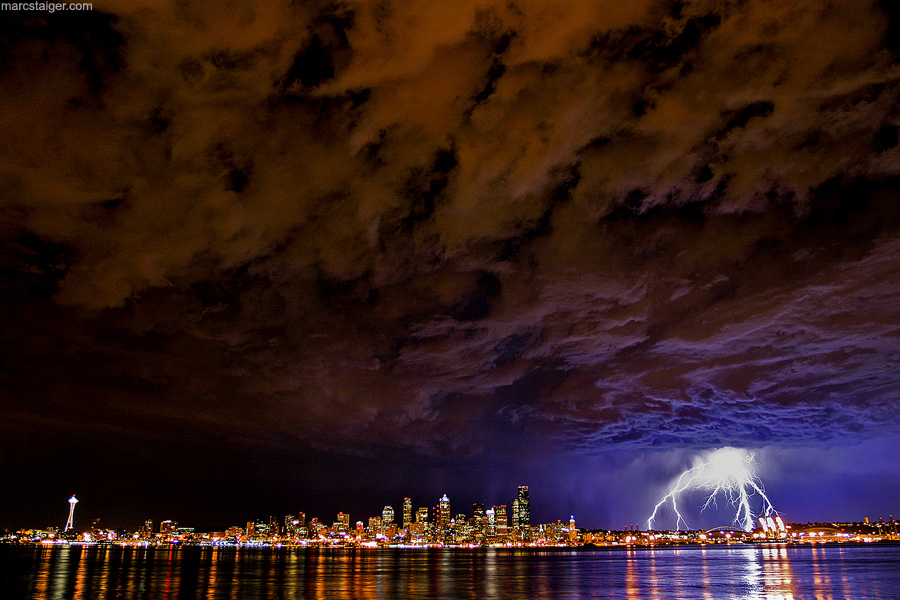
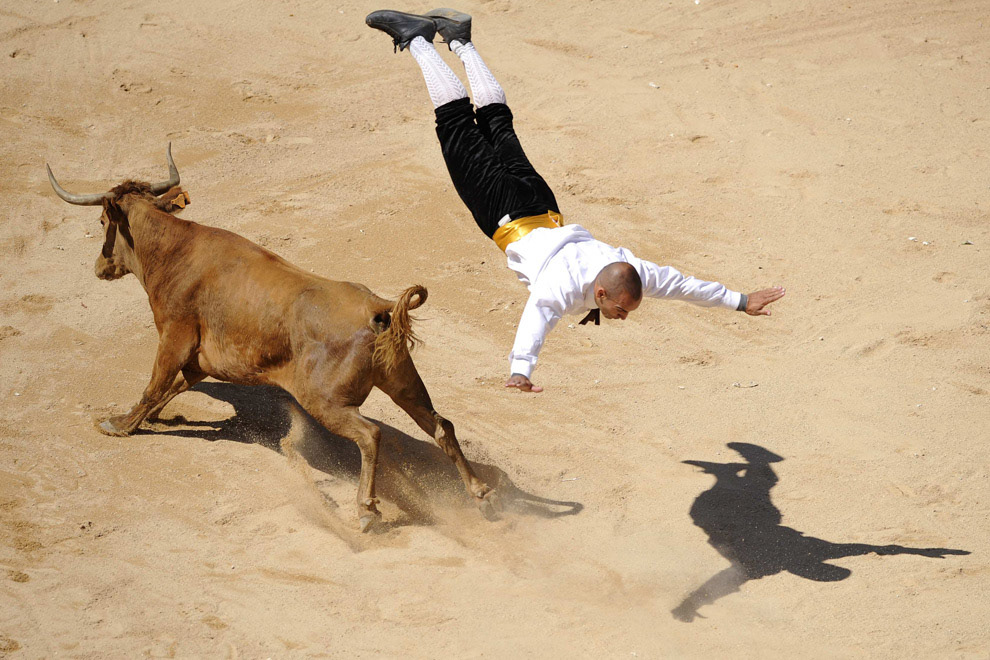
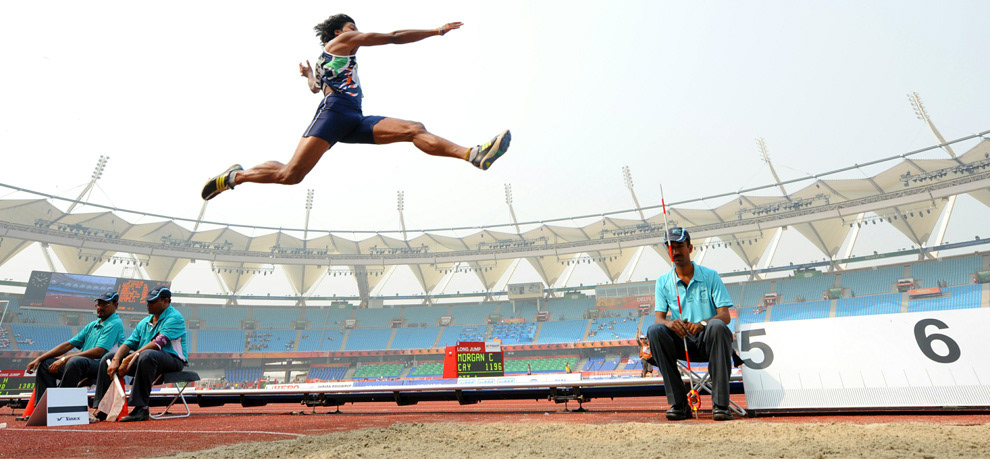
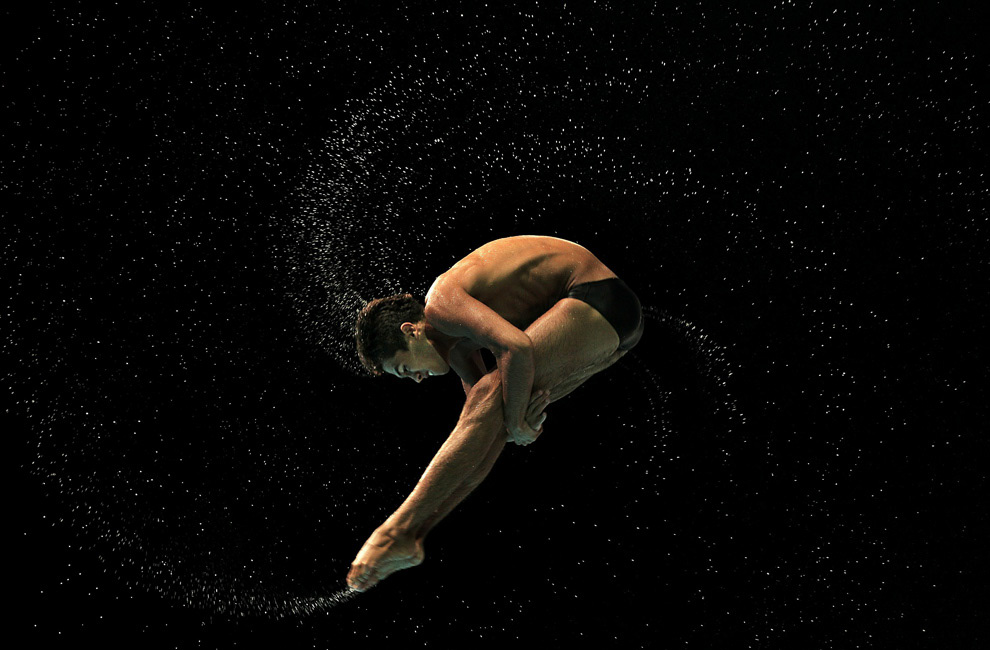
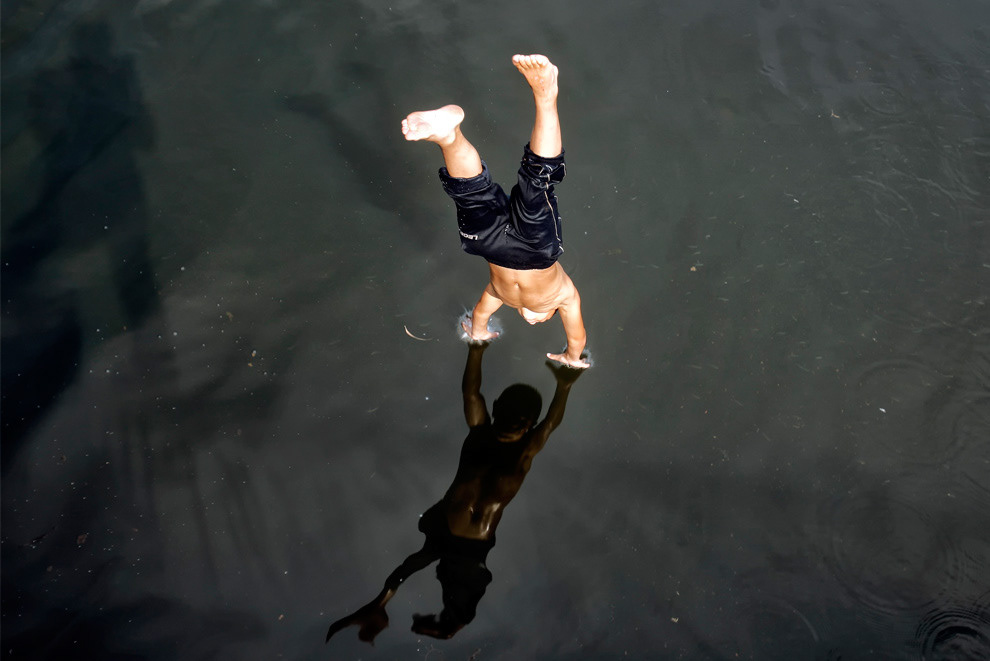

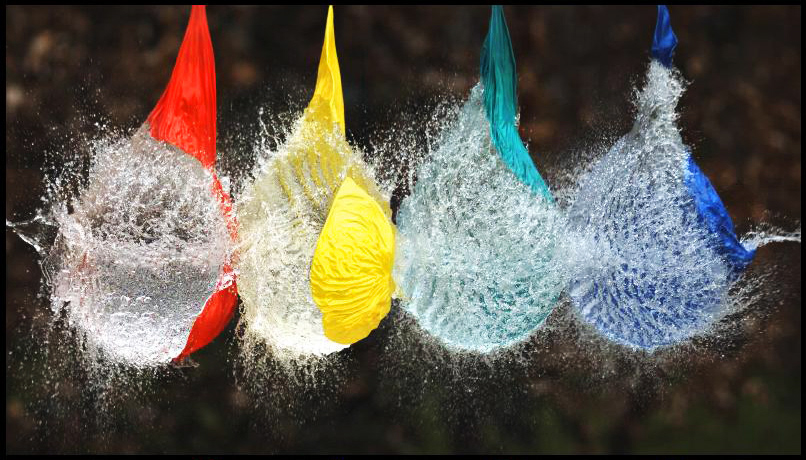
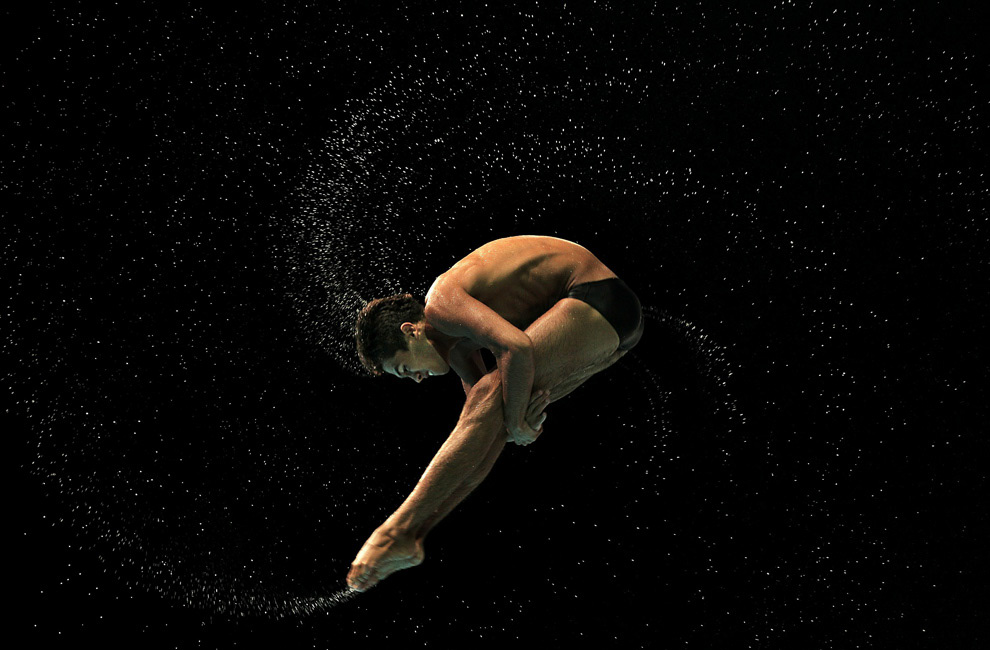
X. Applications in motion footages (CD)
We saw some zero moments from one angle, but now let us see a zero moment of an action or at time equal zero while we walk on a real time. This video is a war scene contains explosion, particles and falling people. These actions always happened fast and quick so you cannot see another location or angle. But here you will see the meaning of frozen time.
We saw some zero moments from one angle, but now let us see a zero moment of an action or at time equal zero while we walk on a real time. This video is a war scene contains explosion, particles and falling people. These actions always happened fast and quick so you cannot see another location or angle. But here you will see the meaning of frozen time.
Another strength of the virtual reality is that we can control the time by speeding it up which known by “Time-Lapse” as mentioned, but you cannot imagine that unless you see it. So here is a regular fast action that we see and familiar with, but this time it is slowed down. Now you have to focus on the clouds movements how they look and the sunset and even more the movement of the moon during the night. Here it is and enjoy it.
Her I am showing you regular slow actions that has been speeded up. You will be amazed with the amount of details that you miss in your daily life while you see these actions. The video describes itself bellow.
And finally a composite of many times of several speeds in one Scene which is the perfect idea of the virtual reality and the stunning hit of time perception. In this video you will see the man moving in real time while the car and the lady moving in slow motion and the whole scene except the man moving in minus time I mean it is playing backward the it change to the wright direction.
XI. Generating forms from (speed-time relationship) in architecture:
As we saw the frozen images of actions that have been stopped, we noticed a new form that we never saw before such as the balloon explosion and the tank firing. Architects try to achieve form that produced in by the zero moment pictures. In other word they tried to have them in realty instead of being in the digital media, so then we had what we call dynamic architecture and motion in architecture. This open a new world of architecture and many industrial products to have these form that you don’t see in real life and also not a mind fiction because simply it is a moment of time that been frozen. Many famous architects are achieving this ideas in their projects such as Zaha Hadid who known mainly with here fluid or moving buildings (in figure12 and 13). The buildings are a caption of the sand movement (figure 14) over time which abstracts some kind of motion and dynamic sensation.
As we saw the frozen images of actions that have been stopped, we noticed a new form that we never saw before such as the balloon explosion and the tank firing. Architects try to achieve form that produced in by the zero moment pictures. In other word they tried to have them in realty instead of being in the digital media, so then we had what we call dynamic architecture and motion in architecture. This open a new world of architecture and many industrial products to have these form that you don’t see in real life and also not a mind fiction because simply it is a moment of time that been frozen. Many famous architects are achieving this ideas in their projects such as Zaha Hadid who known mainly with here fluid or moving buildings (in figure12 and 13). The buildings are a caption of the sand movement (figure 14) over time which abstracts some kind of motion and dynamic sensation.

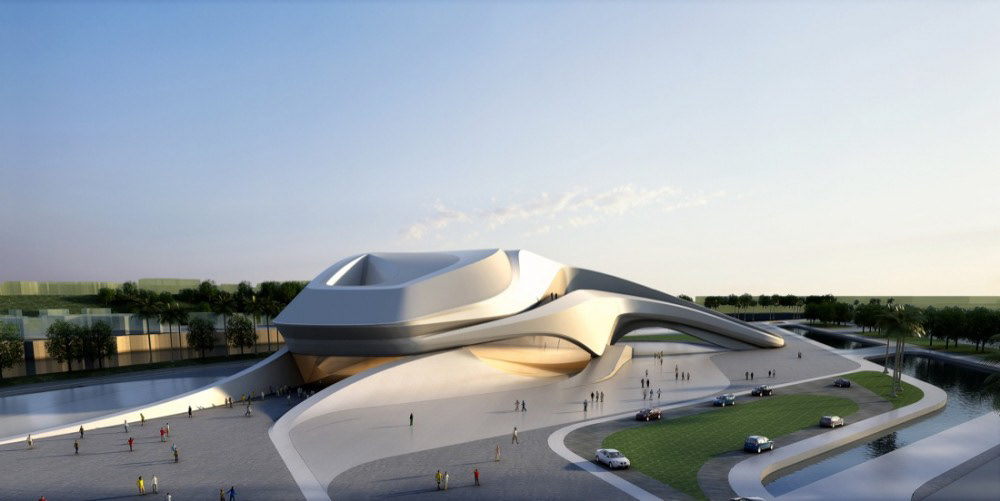
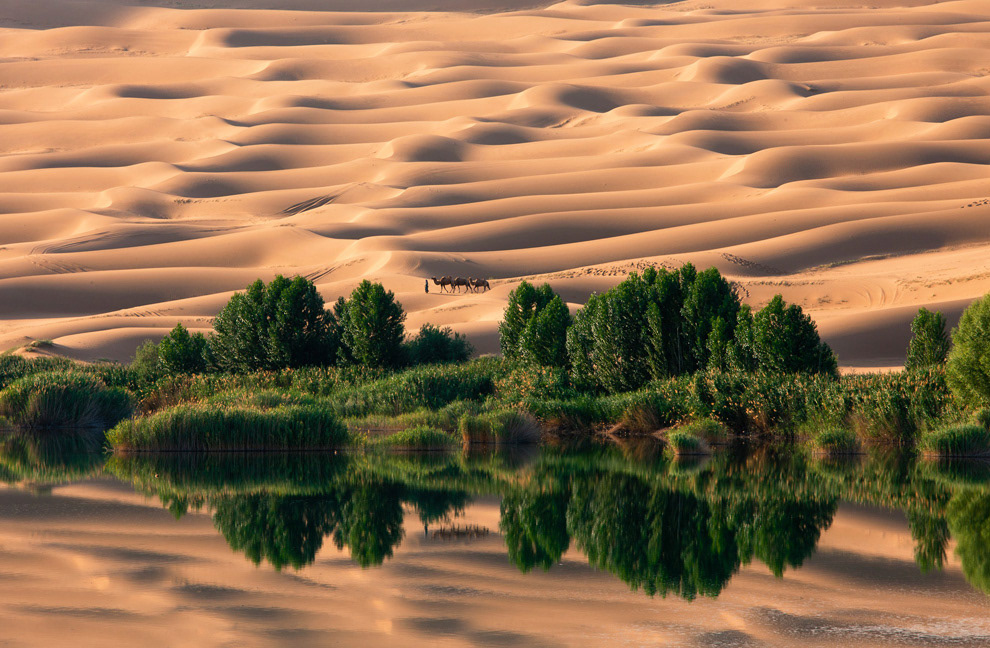
Also Frank Gehry who is using a statically frozen moment of falling objects (figure 15 and 16) and Daniel Libskin who has a deconstructing building of a frozen explosion (figure 17 and 18). And many other buildings with same sensation as listed below.
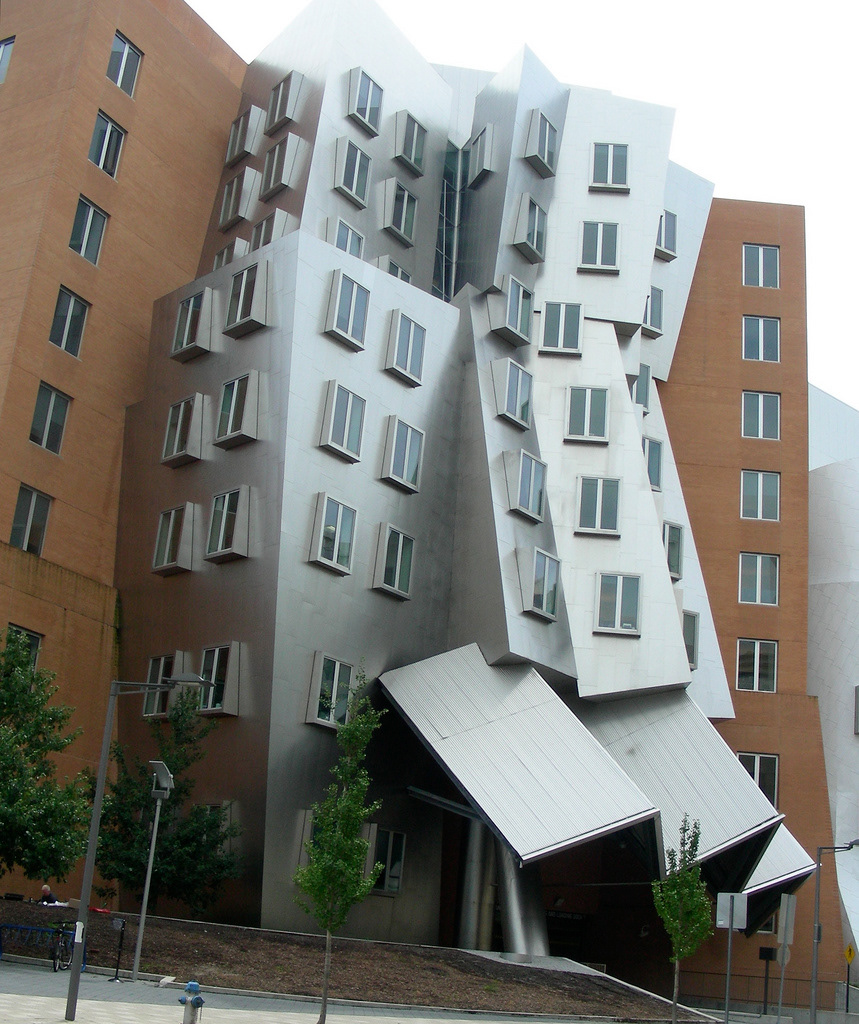

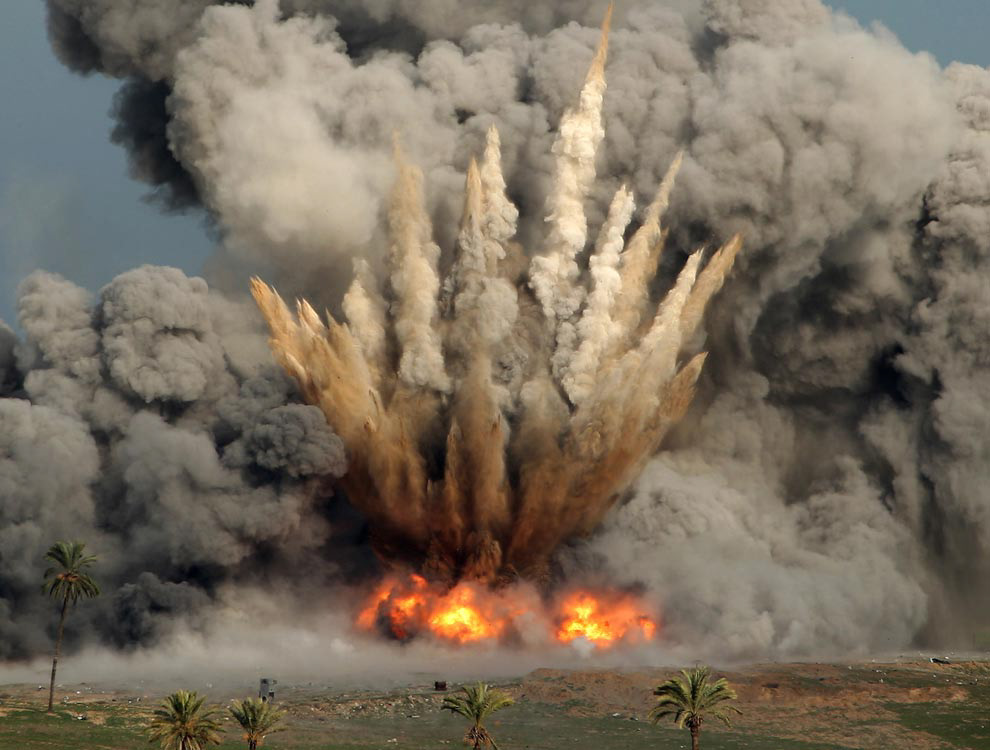
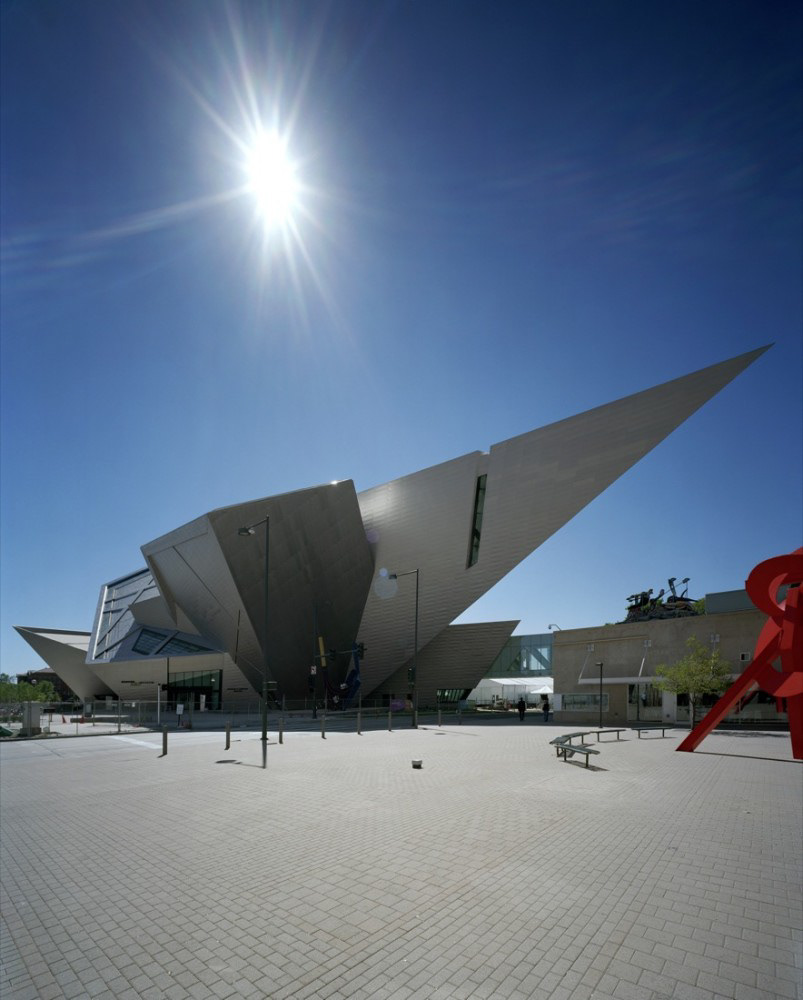
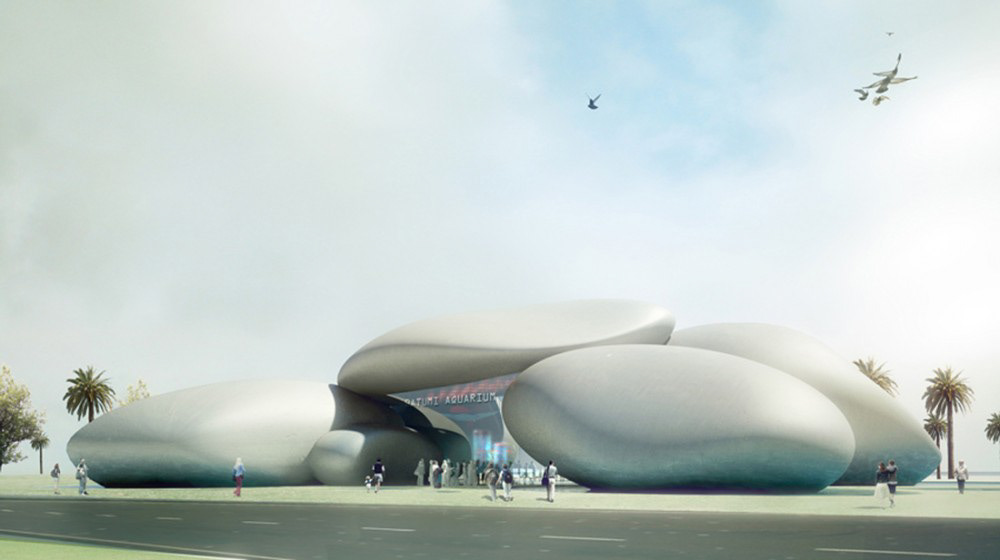

XII. Conclusion:
The applications of speed and time are endless because if we mentioned how many things could be derived from the idea of controlling the time we will never end. Speed and time are not only numbers or physics; it is the impact of the perception in visual experiences. Scientist producing ideas that stop at the scientific level but when the artists and designers get involved they think in a different way because their perception is different. Controlling time through speed factor is an inspiration to generate new type of arts and architecture. It is become an individual form of art produced in term of sculpture s. photographs and movies. The virtual reality is no more being serving the main function it’s made for, it become an individual world that also creating its own application that totally not related to reality. And these artist and scientists trying to do the opposite today by moving the virtual reality applications and projects to reality, and you can imagine what it will produce in the near future.
The applications of speed and time are endless because if we mentioned how many things could be derived from the idea of controlling the time we will never end. Speed and time are not only numbers or physics; it is the impact of the perception in visual experiences. Scientist producing ideas that stop at the scientific level but when the artists and designers get involved they think in a different way because their perception is different. Controlling time through speed factor is an inspiration to generate new type of arts and architecture. It is become an individual form of art produced in term of sculpture s. photographs and movies. The virtual reality is no more being serving the main function it’s made for, it become an individual world that also creating its own application that totally not related to reality. And these artist and scientists trying to do the opposite today by moving the virtual reality applications and projects to reality, and you can imagine what it will produce in the near future.
XIII. Bibliography
1. Physics 101, Physics For Dummies Steve Holzner, Ph.D.ISBN: 978-0-7645-5433-9
2. http://www.jimloy.com/physics/4d.htm
3. http://www.buzzle.com/articles/does-the-4th-fourth-dimension-of-time-exist.html
4. The Metaphysics of Virtual Reality by Michael R. Heim
http://en.wikipedia.org/wiki/Virtual_reality
5. Goldberg, N. (1992). Camera technology [ISBN 0122875702, 9780122875700]. (The Dark Side of The Lens), Retrieved from http://books.google.com
6. http://www.yesmag.ca/how_work/camera.html
7. http://www.photoconcept.net/photography-kick-start-guide-how-your-camera-works/
8. Visual Art Websites, for media.
9. www.Boston.com/bigpicture
10. www.archdaily.com